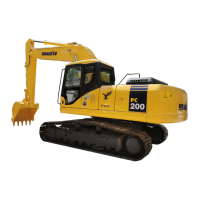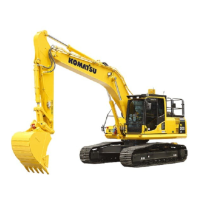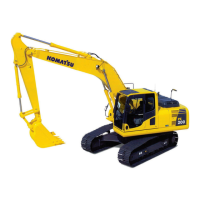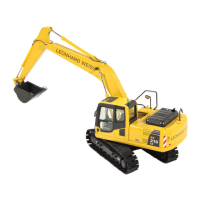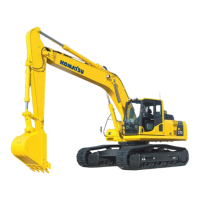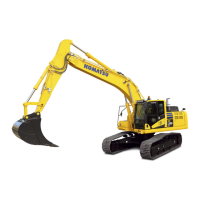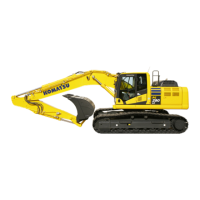MAINTENANCE PLAN
168
4.7.11.b CHANGING THE COOLANT
DANGER
• Soon after the machine has been stopped the coolant is
very hot and under pressure and it may cause serious
burns; let the engine cool down until it reaches approxi-
mately 40÷45°C before changing the coolant.
• Slowly loosen the radiator cap, in order to release the re-
sidual pressure.
• Oils, filters, the coolant and the battery are considered
special waste and must be collected and disposed of ac-
cording to the anti-pollution regulations in force.
IMPORTANT
☞
• The following operations refer to the change of permanent
coolants; if the coolant is water or water with antifreeze,
which is used according to the season, it is necessary to
wash the cooling circuit in order to eliminate any encrus-
tation. (See “4.7.1.a WASHING THE COOLING CIRCUIT”).
1 - Open the engine hood (See “3.5.1 ENGINE HOOD”).
2 - Rotate the right counterweight to the open position (see
"3.5.2 RIGHT COUNTERWEIGHT").
3 - Loosen and remove the upper cap (1) of the radiator.
4 - Open the drain cock (2) of the radiator, remove the drain plug
(3) positioned on the engine block and let the fluid flow out.
Use a 17 mm hexagon spanner.
While the fluid flows out, drain the coolant tank (4).
5 - Close the drain cock (2), put back the plug (3) on the engine
block and fill the radiator with new fluid (See “4.3 FUEL,
COOLANT AND LUBRICANTS”).
6 - Start the engine and let it idle for a few minutes; check the
level again and if necessary top up before putting back the
upper cap (1).
7 - Fill the tank (4) until reaching the maximum level.
8 - Rotate the lateral counterweight to the closed position, close
the engine hood and put back the inspection cover (1)
RWA09290
4
3
1
2
RWA09300
4

